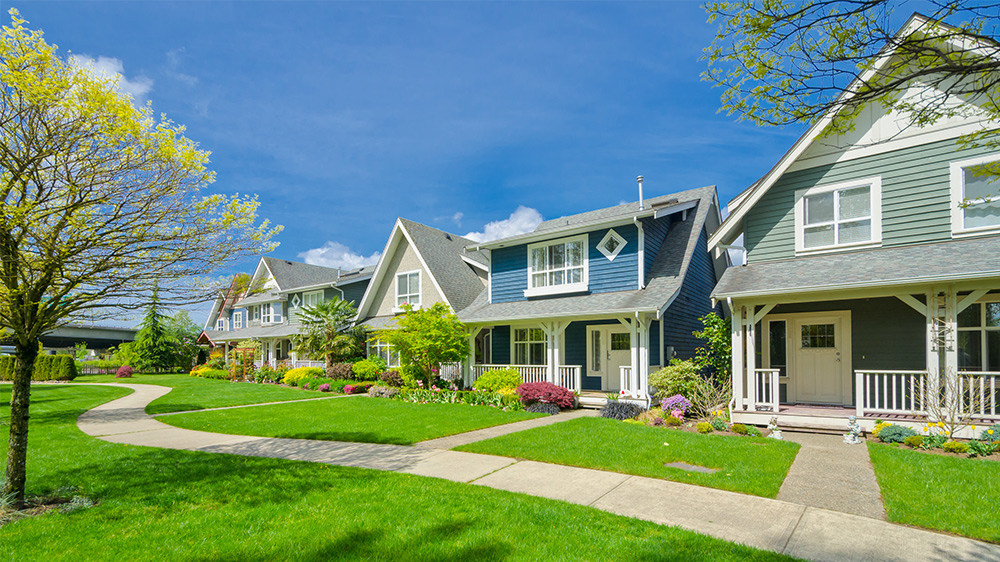When you’re purchasing a production or tract home, determining how much you should pay is fairly straightforward. It can be as simple as looking at the recently sold homes in the neighborhood and considering how your specific lot stacks up. But if the home you want doesn’t compare so easily with its neighbors — say, it’s bigger or custom-built — figuring out how much to pay can be trickier. Here are six things to do before deciding if it’s worth it.
1. Use public records
Whether you’re hoping to buy in a new development or an already established area, looking through public records can provide you with useful insights like past sales history and tax assessments. Trulia offers public property records on each home listing. If you want more historic information, you can find it at the county clerk’s office or through online public records services. This public info may help you determine what’s reasonable for a property in the area — and give you a sense of what your tax payments will be. One caveat: If you live in a market that’s changing rapidly, that information could already be outdated by the time you get your hands on it.
2. Look for popular neighborhood amenities
There are certain neighborhood features that appeal to nearly everyone and increase the value of the homes near them. These are the must-have amenities real estate investor Eugene Gamble looks for before he invests in a neighborhood: highly rated schools, easy highway access, and nearby stores, markets, leisure facilities, and restaurants. Roy Koppelmann, a contractor building a home in the Plaza Midwood area of Charlotte, NC, says he likes that his neighborhood has some suburban features while still being close to the city center.Another perk to consider is walkability. Can you get to stores, restaurants, and recreation areas without being car-dependent? “The addition of new public transportation stops increases a home’s walkability, adding to its appeal, says King Davidson, senior vice president of real estate at Fundrise, a real estate investment platform.
3. Consider the neighborhood’s potential
Whether you’re looking for a move-in ready or a project house, when it comes to property values, the neighborhood is just as important as the house. A fixer-upper in a high-value neighborhood allows you to do more updates and enhancements before you risk over-improving the property. What’s a high-value neighborhood? There are some key features that can clue you in on a neighborhood’s potential. Look for new construction that can signify growth, such as new streetscaping or street-widening projects, or construction of new shopping centers or schools.
4. Be wary of too much development
Expansion could increase the value of a neighborhood, but there’s a tipping point where too much growth could bring down home values. “Big developments, especially commercial developments, could negatively impact a neighborhood’s value, especially if noise and traffic will increase,” says Sam Heskel, president of Nadlan Valuation, an appraisal management company in Brooklyn, NY. “Taller residential buildings could block sunlight and create more parking congestion on the block.”
5. Beware of features that decrease value
Things like nearby train tracks (especially with loud, late-night traffic), neighbors with unkempt homes, and nearby foreclosures can drag down home values. “More things that decrease local pricing include high-tension power lines and any energy production plants, be they nuclear or fossil fuel–related,” says Gamble. Look around for store closures too. “Increased ‘for rent’ signs in store windows can indicate economic stagnation and possible home depreciation,” says Davidson.
6. Understand the “Goldilocks effect”
Goldilocks always chose “just right” option, right in the middle. This applies to real estate as well. Many people believe you should never buy the most expensive house in the neighborhood because you will have a difficult time recouping your investment should you decide to sell. So what happens if you decide to buy the nicest house? “Your home value will help lift up the listing prices of your neighbors’ homes, but their home values will not help to lift yours,” says Davidson. Knowing this going in, if you want the house, try offering a price more in line with the rest of the neighborhood, he suggests. The other option: plan to live there forever.This approach can also help you figure out what a reasonable neighborhood home price should be, especially if you’re eyeing a home bigger than surrounding homes. Use the neighborhood average price per square foot as a guide to getting the right price.There’s also wisdom in not buying the worst house in the neighborhood. Unless you put enough money into the home to make it as nice as the surrounding homes, you’re likely to have a difficult time selling it. People who are looking in a particular neighborhood often want specific features or upgrades, and the worst home in the neighborhood probably won’t meet their expectations. There is an exception: buyers looking for a fixer-upper in a hot neighborhood. In that case, buyers might want to overlook a home’s less-than-stellar features.
More resources from Trulia:
5 Signs Of A Dog-Friendly Neighborhood
Does It Really Matter What Your Neighbor’s Home Sold For?


